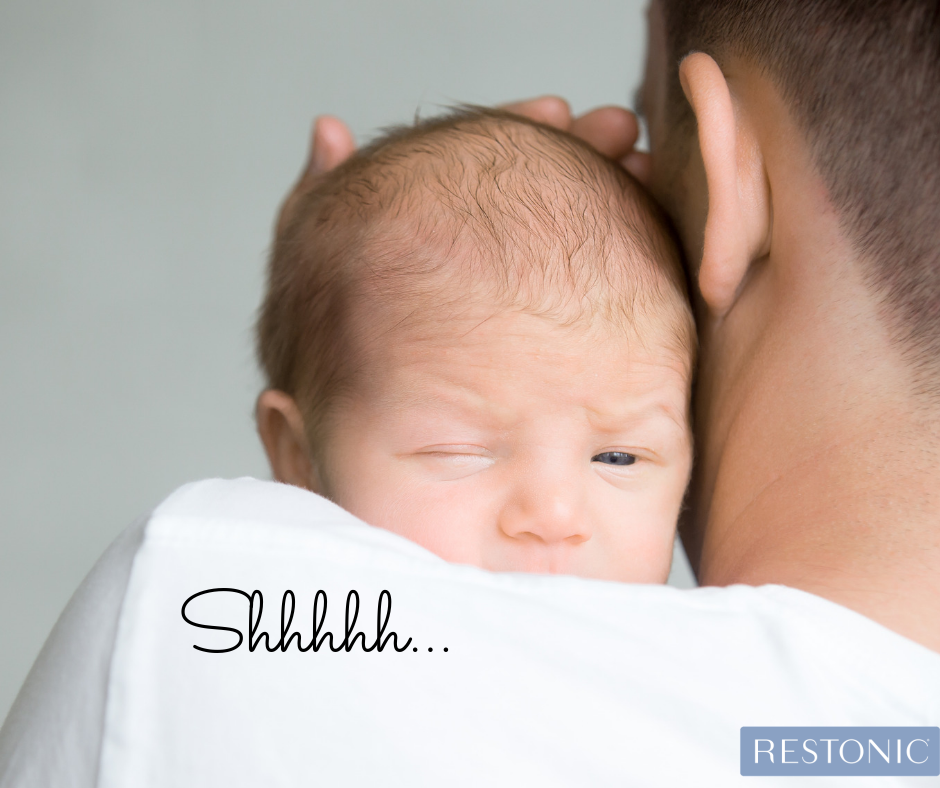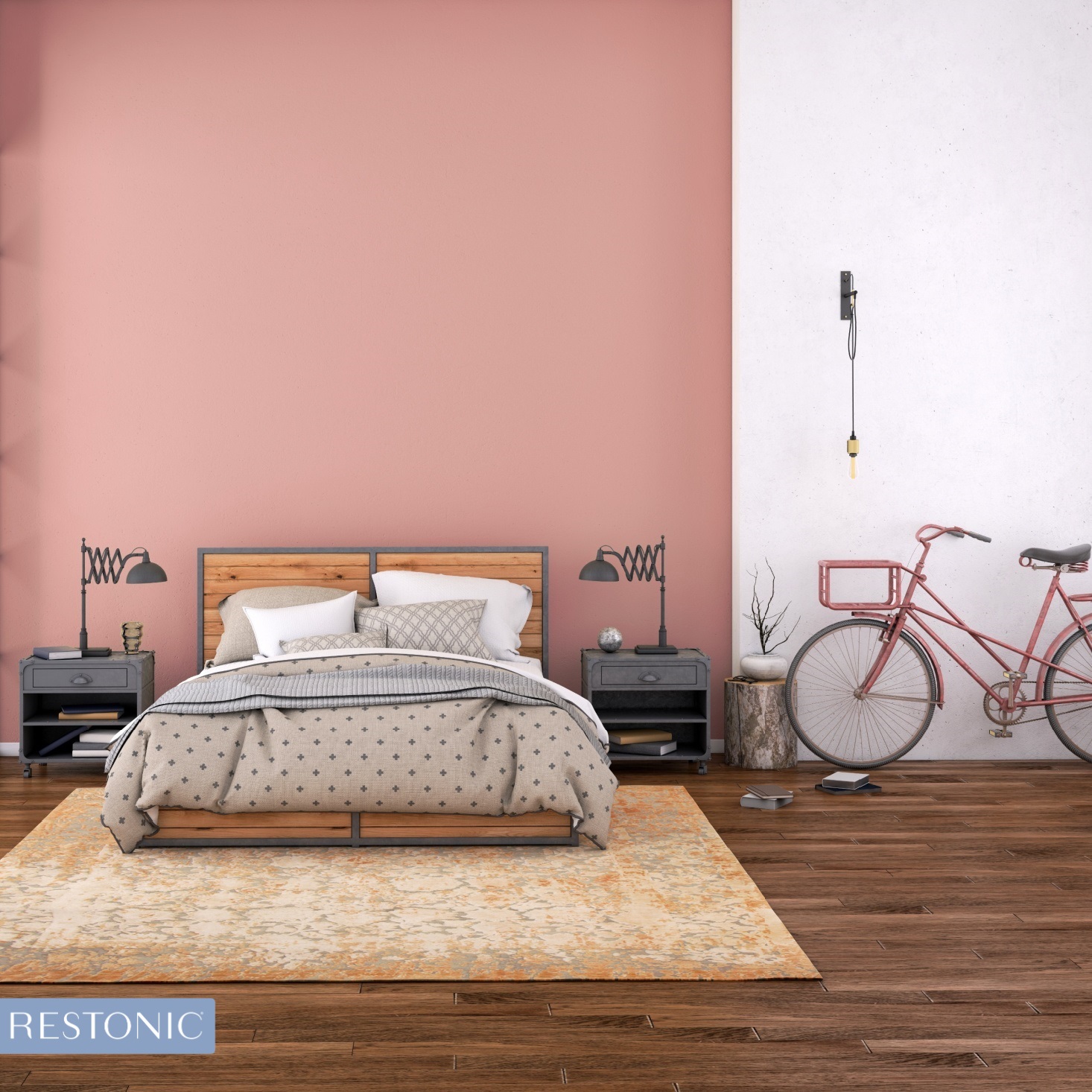From pink and white, to brown and blue, some types of noise are better than others – especially when it comes to sleep
It seems counter-intuitive that noise can help you sleep, but it’s a fact. That’s not to say you can easily fall asleep to the sounds of honking cars or heavy construction equipment just outside your window.
Research shows that the color of noise is a big sleep influencer – whether it’s a help or a hindrance. How does it work and what other colors of sound are there? And most importantly, how do they benefit sleep? Let’s take a closer look.
Ranking right up there with darkness and a cool temperature, being in a quiet environment is a key component in creating a bedroom setting conducive to sleep. Environmental noise is a leading cause of sleep disturbance, so it’s something we always want to minimize when we’re trying to sleep. White noise might be the answer for some, including for those who experience chronic tinnitus, a non-auditory, internal sound.
White noise, the color of noise we hear about most frequently
 White noise is a consistent noise, like the sound of a fan – and it’s made up of all frequencies. Some sleepers swear by it. Many will purchase special white noise machines to help them get better quality rest by masking other sounds that might wake them up – such as a truck roaring by, a door slamming or barking dog.
White noise is a consistent noise, like the sound of a fan – and it’s made up of all frequencies. Some sleepers swear by it. Many will purchase special white noise machines to help them get better quality rest by masking other sounds that might wake them up – such as a truck roaring by, a door slamming or barking dog.
There have been more than a few studies that have studied the effectiveness of white noise and the results are largely positive. In a small 2021 study published in the journal Sleep Medicine, New York City residents who experienced sleep issues because of a significant amount of environmental noise tried using a white noise machine for a few weeks and found it was an effective tool for improving sleep. In Korea, researchers studied hospital patients with some listening to white noise and another group using earplugs before bedtime. The white noise group experienced better sleep quality compared to the other group. The findings appeared in the Journal of Adult Nursing.
White noise has also been studied for its benefits in reducing crying in infants, decreasing symptoms due to ADHD, improving work performance, easing insomnia and anxiety. If you’re experiencing sleep issues, it may be worth a try. Many white noise machines are available in the $40 to $60 range. You can also download a free app, such as myNoise (available through Google Play or the Apple App Store), to your smartphone.
Recently, pink noise has been getting attention
 Pink noise is similar to white noise, but gentler with lower, deeper sound waves. Imagine the constant whoosh of waterfalls, a steady rainfall or waves on a beach. There isn’t a large body of research yet that confirms its effectiveness as a sleep aid but some early studies have shown promise. From lowering brain activity, which led to a more stable sleep, to the ability of pink noise to improve memory among older adults who used it at night, it’s also been found useful for those with chronic tinnitus.
Pink noise is similar to white noise, but gentler with lower, deeper sound waves. Imagine the constant whoosh of waterfalls, a steady rainfall or waves on a beach. There isn’t a large body of research yet that confirms its effectiveness as a sleep aid but some early studies have shown promise. From lowering brain activity, which led to a more stable sleep, to the ability of pink noise to improve memory among older adults who used it at night, it’s also been found useful for those with chronic tinnitus.
Some people like pink noise better than white, finding it less annoying and disruptive than white noise. If that’s you, don’t give up on how noise can help you. Just think pink instead. You can find pink noise sound machines, and apps, like Sleepo, Pink Noise and White and Pink Noise Generator, available for download. Also check out YouTube channels, such as Organic Pink and Pink Noise Ten Hours.
Pink and white aren’t the only colors of noise
There’s also brown noise (sometimes called red noise), characterized by deeper and stronger frequencies. They might include low roars like thunder or strong waterfalls. It’s pleasant to listen to, but its effect on sleep hasn’t been studied yet, though it seems to help with concentration, according to some small studies.
 Perhaps you prefer blue or purple noise…
Perhaps you prefer blue or purple noise…
Blue noise is higher pitched than other types of noise, which makes it a color that isn’t good for sleep. It’s more like a whiny hiss than anything else and would more likely keep you awake. Its cousin, purple noise, is even more annoying because of its higher frequencies – something you won’t find in any sound machine.
What about black noise?
Black noise is a kind of pure silence that’s very rare, punctuated with sudden occurrences of noise. Again, not something you’d want to experience in your bedroom while you’re trying to get into the zone for a good night’s sleep.
The main thing to remember with colors of noise and their ability to help you sleep is that you need to find the right one – for you. Individual preference will dictate what works. If white isn’t soothing, switch to pink. Within those categories, look at different types of noise, whether it’s wind rustling through the leaves or a babbling brook, to get the best, and most pleasing, fit for you.
Rest well & wake up ready to go!
Better sleep gives rise to better mornings, bringing your goals into focus and dreams within reach. Hungry for more sleep info? Dig into these posts:
Eager for more sleep info you can really use?
Join our community
Facebook
and let's continue the conversation.
We'd love to hear what you have to say!
This blog does not provide medical advice. It is intended for general informational purposes only and does not address individual circumstances. It is not a substitute for professional medical advice, diagnosis or treatment and should not be relied on to make decisions about your health. Never ignore professional medical advice in seeking treatment because of something you have read on Restonic.com. If you think you may have a medical emergency, immediately call your doctor or dial 911.

